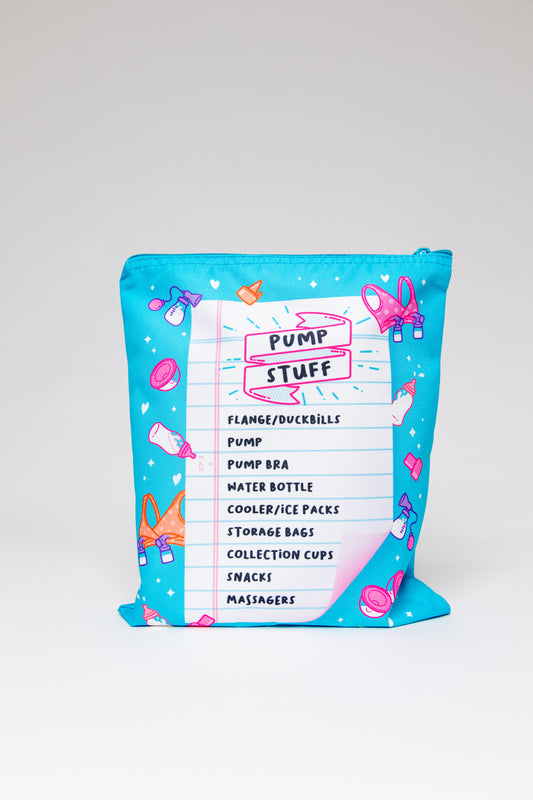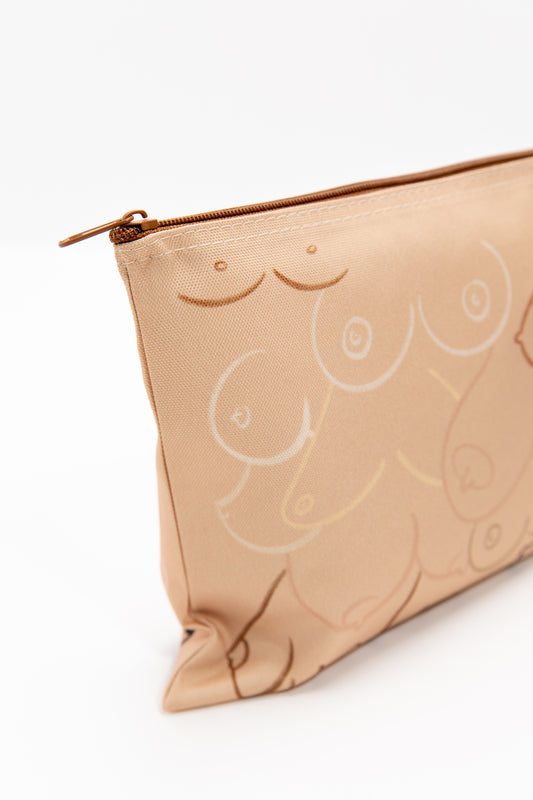
Let’s talk about a quite dreadful sounding task in the pumping world: Power Pumping. It's not a miracle cure—it’s a short term strategy rooted in the principle of supply and demand. You tell your body that your baby needs more volume and, in return, your body (hopefully) gets the memo to level up milk production. Whether your goal of power pumping is to boost dwindling output, recover from a sleep-skipped pump session, or prep for that inevitable return-to-work freezer stash panic, it may be part of your breastfeeding journey at some point.
What is Power Pumping?
You’ve heard of power lifting—big dudes with big weights. But have you heard of power pumping? Similar vibes. Let’s break it down.
In the world of nursing, you are always relying on your baby’s feeding cues, and your body responds. For example, if your baby is cluster feeding, your body kicks into overdrive and says, “Alrighty, I guess I need to make more milk.” But when you’re exclusively pumping—especially from day one—you don’t get those cues as obviously. It’s up to you to tell your breasts how much milk to produce via your pump.
If you're brand new to exclusive pumping, check out my post on Why Some Moms Choose to Exclusively Pump and my Exclusive Pumping Schedule From Day One.
What Does a Power Pumping Session Look Like?
Power pumping is a short term strategy designed to increase your breast milk supply when you notice a dip in milk output or if you’re starting off with low supply.

Here’s how to do a power pump session:
- Carve out about an hour—yes, an entire hour. Ideally when no one needs you (lol), or perhaps when the baby is asleep. Most moms choose the evening as this is when production typically is the lowest.
- Use a double electric pump (don’t even try this with a manual or single pump).
- Start by pumping for 20 to 30 minutes. This is your “normal” pump.
- Take a 10-minute break.
- Pump again for 10 minutes.
- Another 10-minute break.
- Finish with a final 10-minute pump.
You only need to do this once a day for a few days to hopefully see results. Some moms notice big changes after 2–3 days, others may need a week. Don’t expect a geyser of milk on day one—that’s not how this works. Your milk output likely won’t skyrocket mid-pump, but your body is learning what it needs to do gradually.
What if it doesn’t work?
If you’ve done this for several days and your supply is still much below your baby's needs, it might be time to troubleshoot. Consider meeting with a lactation consultant, checking your own calorie intake, or examining your pump parts for correct fit. If you’re not making enough milk, there may be something else going on that power pumping alone can’t fix.
Power pumping is a fair option if you’re looking for a supply boost, but it’s not a fix-all. It’s one tool in your toolbox like everything else in parenting.
In What Situations is Power Pumping Necessary?

Let’s be real—power pumping is not relaxing. But sometimes, it's necessary.
Reason #1: To mimic cluster feeding in the early days
In those hazy, what-day-is-it early weeks postpartum, your newborn will most likely cluster feed, or eat small amounts of milk very frequently, often in the evenings with the goal of building your supply. If you’re exclusively pumping, you don’t get the demand of baby nursing on repeat to tell your body to amp things up. This is why power pumping is sometimes referred to as cluster pumping. Unless baby is actively searching for their next bottle, soon after the last feed, I wouldn't suggest to put this into rotation until there is an obvious demand for it.
Reason #2: You’re not pumping enough milk from the start
Whether you’re combo feeding or pumping exclusively, it’s soul-crushing when your lower milk supply doesn’t line up with your baby’s appetite. Power pumping can help you catch up.
You may not see immediate results, but most moms who commit to power pumping for a few consecutive days will start to see an increase.
Need more on this? Listen to my podcast Episode 36: Low Milk Supply with Kaia Lacy. We talk about how frustrating it can be and what you can actually do about it.
Reason #3: Your baby is going through a growth spurt
Growth spurts can happen anytime, commonly around 3 weeks, 6 weeks, 3 months, etc. Basically, your milk supply is still on last week’s setting while your baby is guzzling endless bottles of pumped breast milk like nobody's business. Power pumping during a growth spurt is like hitting the "turbo boost" button.
Reason #4: Your pumping schedule has gone off the rails
Look, life happens. Maybe your toddler had the stomach flu, your in-laws dropped by unannounced for a weekend stay, or you slept through your pump alarm a few too many days in a row. Whatever it is, a few skipped sessions here and there can lead to a dip in supply. Power pumping can help reset your rhythm.
Reason #5: You’ve been sick
Being sick while breastfeeding is already awful. Unfortunately it can also totally tank your supply. When you're feeling better, power pumping can be a part of your recovery plan. It’s not fun, but it will probably get the job done. Check out my podcast Episode 4: Getting Your Supply Back After Illness for more tips and encouragement.
What Kind of Things Do I Need to Have on Hand for Power Pumping?

So you've decided to take on the challenge. First of all—bravo. Over the course of an hour tied to your pump, you need to set yourself up for success.
In this section of Power Pumping: When & How To Use It, we’re breaking down what breastfeeding mothers actually need on hand to make this as bearable—and effective—as possible.
1. A great, comfortable double pump (not your mobile pump!)

You need the right equipment. This means your primary pump with flanges—not your wearable or your mobile pump. Want the full scoop? Check out my blog on why mobile pumps might not be the best option.
Also: make sure your flanges are the correct fit. If your flanges are fitted correctly but still uncomfortable, read about flange inserts and cushions here.
2. A solid hands-free pumping bra
You do not want to spend an hour holding flanges. Get a supportive, reliable, hands-free pump bra that keeps everything where it should be while you power pump. If you’re not sure what bra is best for your body type or pump setup, I’ve done the heavy lifting for you. Check out my full list of bra reviews here to find the perfect one for you.
3. Snacks and a bottle of water
Pumping in frequent intervals means your body is burning lots of calories and draining fluids. Breastfeeding mothers are already at risk for dehydration, so keep a bottle of water nearby and your favorite protein-packed snack within reach.
4. Entertainment and/or sanity savers
You might be sitting in one spot for what feels like an eternity, so plan ahead. Queue up your favorite podcast, Netflix show, or great read. Or, if you're like me and love a lightweight, wireless, portable pump like the Baby Buddha (use code BEMYBREASTFRIEND for 10% off) or Pumpables (use code BREASTFRIEND for 10% off), find a new recipe and power pump while you cook dinner!
5. Realistic expectations
Be positive and remember: you’re doing this for YOU and your baby. One hour of effort now can lead to better supply and less stress the rest of the day.
Final Thoughts on "Power Pumping: When & How To Use It"
Power pumping may sound intense, but with the right setup and a little patience, it can lead to great results in just a couple of days. By mimicking the natural pattern of a baby with your double electric breast pump, you’re signaling your body to produce more milk—without needing to overhaul your entire routine. Power pumping isn't at the top of my preferred pumping methods but it can be effective when applied consistently. Give it a try, stay consistent, and don’t forget: you are doing a fabulous job!





